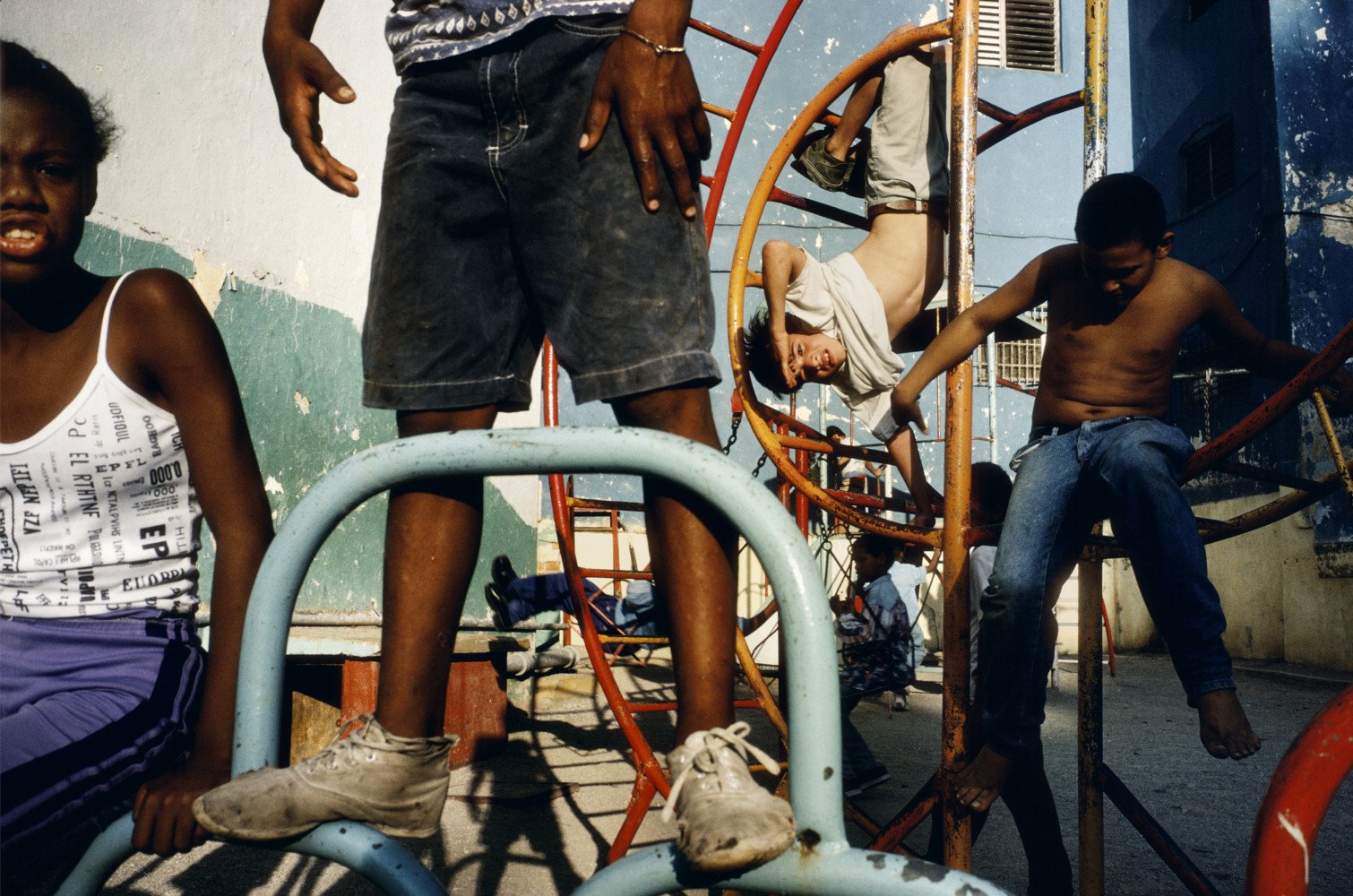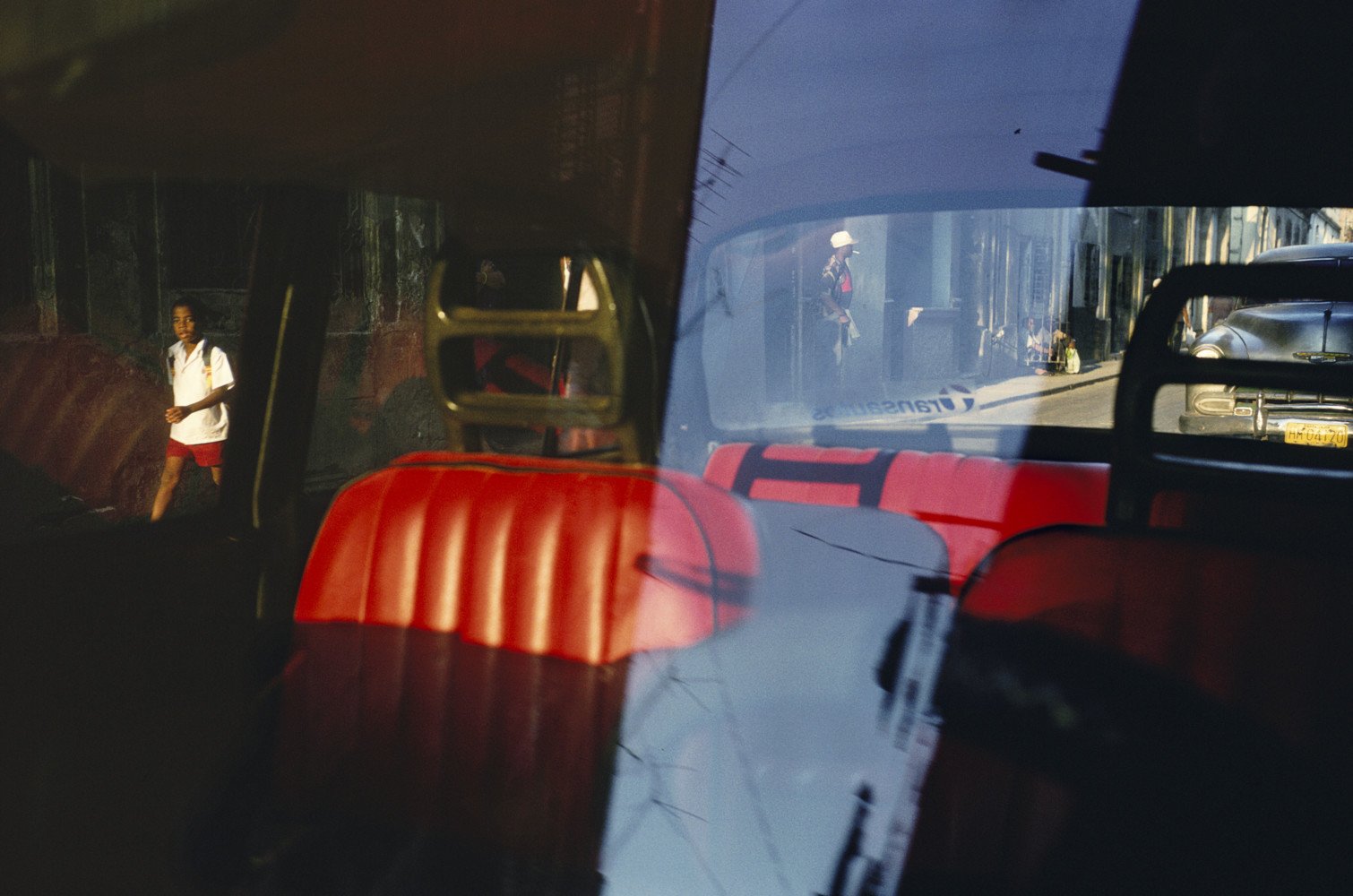Who is Alex Webb?
Alex Webb has led a life full of great achievements. Beyond graduating from Harvard with a major in history and literature and becoming a full time photographer at the age of 22. He also became a full member of Magnum Photography in 1979 at the age of 27. From that point on he has become known for his layered and complex images that have been captured in places that often displayed social issues that were just as (if not more) layered and complex than the images themselves. The Caribbean, the US/Mexico border, Latin America, Africa, India, and several other places around the world have all been central focus points of Alex Webb’s work for varying durations of time. His work has been displayed in 17 published books, The New York Times, National Geographic, and worldwide in a number of galleries and museums. Now in his 70s, Webb still produces work and takes part in leading and critiquing the work of other photographers in workshops in places as far reaching as small towns in Mexico and Paris, France. The most recent of these was stated as being intended “for photographers who collaborate with the world, not for those who dramatically alter their photographs digitally.”
Failure, Obsession, Mystery, and Exploration
"I only know how to approach a place by walking. For what does a street photographer do but walk and watch and wait and talk, and then watch and wait some more, trying to remain confident that the unexpected, the unknown, or the secret heart of the known awaits just around the corner"
Reflecting on his wanderings of the streets of Haiti, Mexico, Istanbul, and others Webb has pondered why he was even able to capture some of the photos that stand out in his body of work. “Why did I happen to have my camera to my eye when a boy jumped off a wall” in Mexico? “Why did I turn a corner and wander into a particular barbershop” in Istanbul? Chance plays a huge part in creating unmanipulated photos and scenes, but clearly acquiring them is to some degree the result of chasing the work every day with the constant obsession that is required to stand out in this genre. As Alex Webb is clearly aware of as he describes the process as “mysterious and exploratory,” as well as, a byproduct of being able to accept a large amount of failure.
“Street photography is 99.9% about failure. So often I feel defeated by the street. I sometimes find, however, that if I keep walking, keep looking, and keep pushing myself, eventually something interesting will happen.”
Alex Webb compares his experience as a street photographer to a blind man who gets on a bus without knowing where it’s going. He says his creative journey has been “intuitive rather than rational, spontaneous rather than preconceived.” Like every good street photographer Alex Webb is an aimless arrow on a mission to reach a target that he knows will eventually arise. He says his photography and way of exploring the world without preconceptions is all about “immediacy, intuition, and serendipity.” Sometimes the target is found, but it’s a matter of waiting for a bullseye, as Alex Webb often relies on camping and fishing techniques to get a great photo when all of the other characteristics of a great background and environment to build out a scene already exist. Once the serendipitous target appears it’s all about relying on the immediacy and intuition built up from years of experience to collect the frame, realize the 0.01% of success has been achieved, and move on.
Layers of Complexity
Fans of Alex Webb’s work will most likely first point to how much is going on in his photos before anything else. However, he claims his work hasn’t changed in regard to how his compositions are constructed since he “first started working seriously in color in 1979” and that the complexities of his images are largely a byproduct of his own life experiences and the places he has photographed. Sighting Istanbul specifically as a “richly, multilayered city” that produced some of his “consistently visually complex work.”
In regard to taking these complicated compositions Webb has stated “I’m not talking about complexity for complexity’s sake. I take pictures because the world I experience is a complicated and ultimately inexplicable place.”
Just looking briefly at his work it’s easy to see that many frames have multiple subjects that are somehow in their own individual emotional spheres while also being in harmony with one another. Webb’s desire to include “more than one point of focus” and allow “multiple moments to coexist” is an attempt to push photography so far that it falls “just short of chaos”.
The near chaos of his photography mirrors the potential for chaos in the places he photographs where political and social tension can be felt in the air. But Alex has made it known that it isn’t the “political or economic” tensions of these places that draw him to photograph them. He is instead “moved” and “excited” by the “totality of the cultures of these places”. For example, Webb felt compelled to photograph Mexico, Cuba, and Haiti, because of how different they were culturally from the United States. To Webb you could see life playing out on the streets, notice communal differences within the communities of these cultures, and gather an overall different sense of vibrancy which was in stark contrast to what he was familiar with in the northeastern part of the United States where he grew up.
Shaping Light, Color, and Shadow
After working in black and white until 1979 Webb switched to color film, because he was inspired to do so by all of the places he was visiting. Webb describes the New England region he grew up in as having a color palette of “gray-brown” that wasn’t greatly impacted by shooting in black and white, however, he felt the “vibrant colors” he found in the Caribbean and Mexico needed to be conveyed through color film. In these cases, black and white film wouldn’t do these excessively colorful places justice. Additionally, the “searing light” found throughout these environments is something that he became aware of as being “critically important” because of the effect it had on the colors of his frames. “The time of day. It’s a big part of the way I see and experience the world.” Color is an element he claims to be “acutely aware of” in regard to the “emotional and sensory” resonance it has and this resonance can be greatly influenced by the “nuances”, “color”, “angle”, “shaft”, and “particular tone” of any light source that he encounters.
All of this attention to light and color is often tied together perfectly with the heavy contrast and dark shadows that are so iconically part of Webb’s work.


